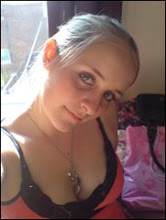
Director: Rob Cohen
Production Details: 2005 - USA
Genre: Thriller/Action/Sci-Fi/Adventure
Even before the film starts you hear music, (non-diegetic sounds) then you can guess its going to be about flying aeroplanes as you hear the diegetic sound of an aeroplane whizzing past. Action packed film, some betrayal & death but ends with a happy ending. All of this is brought through by the music and the way spectators can feel through music what is going to happen.
For example, in 'Scream' you can feel tension in the music and then someone screams suggesting their is going to be lots of deaths and its not going to nice.
The tempo starts to change as the action starts to kick in, where you see the people in the aeroplanes flying them talking to there base. Then cuts to their bases to hear the orders from the general.
Tempo rises as they are assigned a mission, the action builds. Tempo rises even more as the action gets more exciting for the spectator.
For the first character, you can tell its a woman flyer as it plays a quite a steady pace, adding a femine touch to it. She seems to be quite organised and is calm in situations as she knows how to do the job well. Tempo changes when something goes wrong, as she turns for back up, this builds alot of tension as you thought she would not panic. The use of silence to build tension before an explosion is used so the explosion will seem really loud.
A steady pace but faster for the second character showing that he likes the adrenaline rush of the plane, and the spectator feels that.
The last character has completely different music, suggesting he likes to be rebellious in what he does, maybe a leader of the team. He seems to be able to make his own rules, and get away with it.
You hear a missle fired and then you follow the path, it cuts to an inside shot of the target ( a cave ) where there is silence for a bit, then you hear the missle coming closer and closer then the cave explodes this creates a great effect for the spectator and builds lots of tension.





















